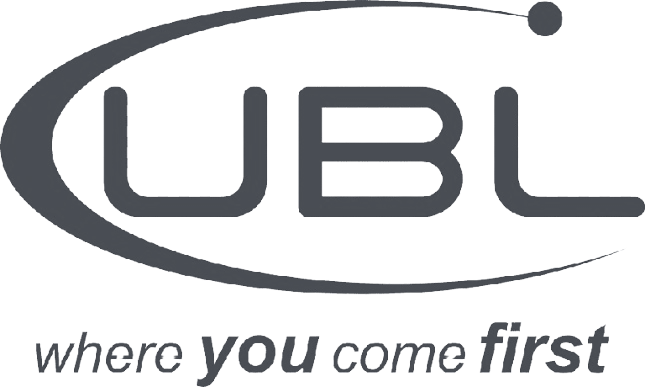- Become a Data Science & AI Pro in Weeks, Not Years
Data Science & AI Bootcamp
Online
Google Meet
16th June
Starting Date
4 Months
Duration
7:00 - 9:00PM
Monday, Wednesday, Friday
Fee: PKR 100,000
- Did you know?
Da|
This four-month-long Data Science and AI Bootcamp is designed to equip you with essential Data Science and AI skills like Business Intelligence, Machine Learning, Deep Learning, Large Language Models (LLMs), NLP, Computer Vision, Generative AI, and more.
This program will teach you Python for Data Analytics, a key skill for anyone looking to work in data science and AI. You’ll learn how to create and manage data pipelines, work with multimodal data like text and images, and develop AI agents for practical use. The course also covers essential areas like Natural Language Processing (NLP), Computer Vision (CV), and Machine Learning Operations (MLOps). By the end, you’ll have the knowledge and confidence to start a successful career in Data Science and Artificial Intelligence, whether locally or internationally.
Join us on this journey and become a future-ready in Data Science and AI.
- Eligibility criteria
Currently enrolled or have graduated with a bachelor’s degree in:
- Computer Science or related fields
- Any Engineering Discipline (Mechanical, Electrical, Civil etc)
- It's not just Learning - It's a Transformation
Why Choose Our Bootcamp?
This isn’t just a coding course — it’s a career boost. Learn real-world skills, get expert support, and build the mindset to solve real problems like a data pro.
Project-based learning
Learn by doing with real-world projects that build your skills.
Personalized coaching
Get guidance and support customized to your learning needs.
Industry-relevant tools and technologies
Work with the same tools used by professionals today.
Community Support & Mentorship
Get guidance and support customized to your learning needs.
Career Support & Job Prep
Get help with resumes, interviews, and job searches to boost your chances of getting hired.
Ongoing Assessments & Feedback
Stay on track with regular assessments and clear feedback.
- Comprehensive Curriculum That Powers Impact
Course Curriculum
Introduction to BI & Power BI Basics
- Understanding Business Intelligence: definition, goals, and its role in Data Science & AI
- Power BI Overview: architecture, components, and ecosystem
- Introduction to the Power BI interface: reports, datasets, dashboards
- Connecting to data sources: CSV, Excel, mySQL
- Basic data loading and shaping in Power Query
- Exploring the Power BI workspace: fields, filters, visuals
Data Transformation & Modeling in Power BI
- Using Power Query Editor: cleaning, transforming, and merging data
- Common transformation steps: remove columns, rename, pivot/unpivot
- Introduction to data modeling: star schema vs. snowflake schema
- Creating and managing relationships between tables
- Understanding primary keys and foreign keys in Power BI context
- Role of data models in BI dashboards
DAX and Visualizations
- Introduction to DAX (Data Analysis Expressions): calculated columns vs measures
- Key DAX functions: SUM, AVERAGE, COUNTROWS, CALCULATE, FILTER
- Building interactive visuals: bar charts, line charts, maps, cards
- Using slicers and filters to add interactivity
- Drillthrough, bookmarks, and report navigation
- Publishing reports and dashboards to Power BI Service
SQL Basics for BI and Analytics
- Introduction to relational databases and SQL syntax
- Writing basic queries using SELECT, WHERE, ORDER BY
- Aggregating data using GROUP BY and aggregate functions (SUM, AVG, COUNT)
- Combining data using INNER JOIN, LEFT JOIN, and RIGHT JOIN
- Working with NULLs and aliases
- Filtering and sorting data for analysis
Advanced SQL for Analytical Workflows
- Subqueries and Common Table Expressions (CTEs)
- Using CASE statements for conditional logic
- Window functions: RANK, DENSE_RANK, ROW_NUMBER, LAG, LEAD
- Performing cohort and retention analysis with SQL
- Creating views for reusable queries
- Real-world business problems solved using SQL
Python Basics
- Introduction to Python: history, features, and advantages
- Expressions and operators: arithmetic, assignment, comparison, and logical
- Understanding type() function and type inference
- Introduction to data structures: lists, tuples, and dictionaries
- Working with arithmetic operators: addition, subtraction, multiplication, division, modulus, and exponentiation
- Using comparison operators: equal to, not equal to, greater than, less than, etc.
- Logical operators: and, or, and not
- Exploring advanced data types: sets and strings manipulation.
Expressions, Conditional Statements & For Loop
- Evaluating expressions: operator precedence and associativity
- Introduction to conditional statements: if, elif, and else
- Executing code based on conditionals.
- Understanding the flow of control in conditional statements
- Iteration using the for loop: range(), iteration over lists, and strings.
While loop, Break and Continue Statements, and Nested Loops
- Working with while loop: syntax, conditions, and examples
- Combining loops and conditionals
- Using the break statement to exit loops prematurely.
- Utilizing the continue statement to skip iterations.
- Implementing nested loops for complex iterations
Functions
- Introduction to functions: purpose, advantages, and best practices
- Defining and calling user-defined functions
- Parameters and arguments: positional, keyword, and default values
- Return statement and function output.
- Variable scope and lifetime
- Function documentation and code readability
Exception Handling and File Handling
- Understanding exceptions: errors, exceptions, and exception hierarchy
- Handling exceptions using try-except blocks: handling specific exceptions, multiple exceptions, and else and finally clauses.
- Raising exceptions and creating custom exception classes
- File handling in Python: opening, reading, writing, and closing files.
- Working with different file modes and file objects
Mathematical Concepts
- Linear Algebra:
- Vectors, matrices, operations, and their applications in data science.
- Introduction to numpy for matrix operations.
- Introduction to numpy:
- Why numpy is the preferred library for numerical operations in Python.
- Basic numpy operations: creating arrays, array indexing, array slicing.
- Matrix operations using numpy: matrix multiplication, finding determinants, solving linear equations.
Probability and Statistics
- Probability Theory:
- Basic probability, rules, and distributions (normal, binomial, Poisson).
- Random variables, expectations, and variance.
- Descriptive Statistics:
- Measures of central tendency (mean, median, mode).
- Measures of variability (range, variance, standard deviation)
- Introduction to pandas and scipy
- Using pandas for data manipulation and summary statistics.
- scipy for performing hypothesis tests and building confidence intervals.
- Visualization with seaborn and matplotlib to understand data distributions and relationships.
Probability and Statistics II
- Inferential Statistics:
- Sampling distributions and the Central Limit Theorem.
- Confidence intervals and hypothesis testing.
- Correlation and Regression:
- Scatter plots, correlation coefficients.
- Simple linear regression analysis.
- Introduction to Seaborn and Matplotlib
- Visualization of correlation matrices and scatter plots to identify relationships between variables.
- Advanced plotting techniques such as pair plots, heatmaps, and regression plots to extract deeper insights from data.
Introduction and Missing Value Analysis
- Introduction to Exploratory Data Analysis (EDA)
- Importance of EDA in data analysis
- Steps involved in EDA
- Handling missing values: identification, analysis, and treatment strategies • Imputation techniques for missing values
Data Consistency, Binning, and Outlier Analysis
- Data consistency checks using fuzzy logic
- Binning and discretization techniques for continuous variables
- Outlier detection and analysis methods
- Handling outliers: techniques for treatment or removal
Feature Selection and Data Wrangling
- Importance of feature selection in EDA
- Feature selection techniques: filter methods, wrapper methods, and embedded methods
- Data wrangling: cleaning and transforming data for analysis
- Handling categorical variables: encoding techniques
Inference, Hypothesis Testing, and Visualization
- Inference and hypothesis testing in EDA
- Common statistical tests: t-test, chi-square test, ANOVA, etc.
- Visualization techniques for EDA: histograms, box plots, scatter plots, etc.
- Hands-on practical session for complete EDA using a dataset
Overview of Machine Learning
- Supervised, unsupervised, and reinforcement learning.
- Machine learning workflow from data collection to model deployment.
- Introduction to Python libraries essential for ML (Scikit-learn, TensorFlow, PyTorch)
Supervised learning and Linear Regression
- Linear Regression: Concept, loss function, evaluation metrics (MSE, R²)
- Building a Linear Regression model in scikit-learn
- Visualizing predictions vs actuals
Machine Learning Performance Metrics and Naive Bayes
- Evaluation metrics for classification problems: accuracy, precision, recall, F1 score, etc.
- Introduction to Naive Bayes algorithm and its applications
- Implementing Naive Bayes for classification tasks
Logistic Regression, SVM, Decision Trees, and Random Forests
- Logistic Regression: theory, interpretation, and applications
- Support Vector Machines (SVM): concepts, kernels, and use cases
- Decision Trees: construction, pruning, and interpretability
- Random Forests: ensemble learning and feature importance
- Bagging and Boosting: techniques for improving model performance
Clustering Introduction, Partitioning Algorithms, and Cluster Evaluation
- Introduction to clustering: unsupervised learning technique
- Partitioning algorithms: K-means, K-medoids
- Hierarchical clustering: agglomerative and divisive approaches
- Density-based clustering: DBSCAN, OPTICS
- Cluster evaluation metrics: silhouette coefficient, Davies-Bouldin index
Regression and Evaluation of Regression Methods
- Introduction to regression analysis
- Linear regression: assumptions, interpretation, and model evaluation • Evaluation metrics for regression: mean squared error, R-squared, etc.
- Other regression methods: polynomial regression, ridge regression, lasso regression
Introduction to Deep Learning
- Overview of deep learning, its importance in computer vision, key concepts, and architectures.
- Code along session for building Deep Neural Network from scratch
Deep Learning Hyperparameter Tuning
- Strategies for optimizing hyperparameters like learning rate, batch size, and regularization to improve model performance.
Conceptual Overview
- Understand the distinct roles and responsibilities of data scientists and data engineers within projects.
Data Sourcing with Python
- Extracting data from sources like PostgreSQL, MongoDB, APIs, web scraping, and IoT devices.
Databricks Tour
- Get introduced to Databricks as a platform for big data processing and machine learning.
Big Data Handling for Data Science
- Process large-scale datasets using Apache Spark within a distributed environment.
MLflow
- Learn to track experiments and ensure reproducibility in machine learning workflows
Introduction to Convolutional Neural Networks (CNNs)
- Explanation of CNNs, their architecture, and their role in image processing.
- Codel along session on Convolutional Neural Networks
Building Custom Image Classification Models
- Step-by-step guide to creating and training a custom image classifier using a CNN.
Transfer Learning and Introduction to Object Detection
- Introduction to transfer learning, its applications, and an overview of object detection techniques.
- Hands on with YOLO Object Detection
- Practical session on using the YOLO (You Only Look Once) algorithm for object detection.
Custom Training YOLO model
- Detailed guidance on training a YOLO model with a custom dataset for specific object detection tasks.
Using State-of-the-Art Models for Real-World Applications
- Exploring and implementing advanced models in computer vision for practical use cases.
Introduction to OpenCV
- Introduction to OpenCV, its libraries, and its importance in computer vision tasks.
Image Pre-processing and Pre-build Algorithms in OpenCV
- Hands-on session on image pre-processing techniques and using built-in algorithms in OpenCV.
Advance guided project with OpenCV
- Capstone project where Students apply learned techniques in a guided project using OpenCV.
Introduction to NLP and Text Normalization
- Overview of Natural Language Processing (NLP)
- Techniques for text normalization: lowercasing, punctuation removal, etc.
- Basics of tokenization and stopword removal
Text Representation and Tokenization
- Introduction to vectors in NLP: Bag of Words and Count Vectorizer
- Basics of tokenization and stopword removal
Stemming, Lemmatization, and N-gram Language Models
- Understanding and applying stemming and lemmatization
- Introduction to N-gram language models
- Introduction to vectors in NLP: Bag of Words, Count Vectorizer, and TF-IDF
Markov Models and Language Model Evaluation
- Basics of Markov models in NLP
- Overview of Text Classification
- Techniques for evaluating language models: probability smoothing and performance metrics
- Introduction to Naive Bayes and Sentiment Classification
Advanced Classifiers and Vector Semantics
- Generative vs. discriminative classifiers
- Understanding vector semantics and embeddings
- Introduction to neural word embeddings: Word2Vec and GloVe
Deep Learning for NLP and Sequence Models
- Overview of deep learning techniques for NLP
- Applying supervised and unsupervised learning methods to NLP tasks
- Exploring sequence of words in NLP tasks
Transformers and Large Language Models
- Understanding the architecture and mechanisms of transformers
- Overview of large language models (LLMs) and their capabilities
Training and Fine-Tuning LLMs
- Techniques for training large language models
- Fine-tuning pre-trained LLMs for specific tasks
Introduction to Generative AI and Multimodal Models
- Overview of Generative AI and its impact on various industries.
- Understanding multimodal models and how they differ from single-modality models.
- Exploring the OpenAI API: Capabilities and applications for text, speech, and image-based AI.
Speech Synthesis and Conversational Agents
- Objective: Dive into text-to-speech (TTS) and speech-to-text (STT) models and explore conversational AI with agent frameworks.
- Overview of text and voice synthesis technologies.
- Introduction to Eleven Labs and Heygen: Creating high-quality audio and speech synthesis.
- Using OpenAI API for speech synthesis and understanding its capabilities
Advanced Agent Development with LangChain
- Basics of LangChain and its role in agent-based AI.
- Building, customizing, and deploying agents using LangChain.
- Exploring integration of LangChain with other APIs for multimodal interactions, including OpenAI API for image and text generation.
Building Complex Agent-Based Applications with CrewaI, Synthesia, and OpenAI
- Introduction to CrewaI: Building intelligent agents for various tasks.
- Synthesia for video and visual content generation in AI-driven applications.
- Using OpenAI API to generate multimodal content (text, images, and speech).
- Building a final project: Integrate multiple APIs to create a multimodal generative application.
Introduction to MLOps and AI/NLP Fundamentals
- Overview of MLOps and its importance in the AI lifecycle
- Current trends in AI
- Setting up the development environment
Deep Dive into Machine Learning Models for NLP
- Understanding NLP models (llama, GPT, Mistral, etc.)
- Introduction to Hugging Face Transformers and Datasets
- Hands-on: Building a simple NLP model with Hugging Face
Introduction to FastAPI for ML Model Deployment
- Basics of API development with FastAPI
- Deploying a simple ML model with FastAPI
- Hands-on: Creating your first ML API with FastAPI
Advanced FastAPI Features for Production-Ready APIs
- Authentication and authorization in FastAPI
- Hands-on: Enhancing your ML API with advanced features
Docker Image Creation and Application Containerization
- Introduction to Docker and its role in application deployment
- Hands-on: Creating Docker images for NLP applications
- Converting existing applications into Docker containers for scalable deployment
LangGraph and Advanced Model Integration
- Introduction to LangGraph for building graph-based NLP Applications
- Exploring advanced integration scenarios with LangGraph and LangChain
- Hands-on: Designing graph-based workflows for NLP tasks
Deploying ML Models on Google Cloud
- Overview of Google Cloud Platform (GCP) for ML
- Introduction to Google Cloud Run
- Hands-on: Deploying your Dockerized FastAPI application on GCP with LangSmith monitoring
Email Writing
- Basics of Professional Email Communication: Structure, tone, and etiquette.
- Writing Effective Subject Lines: Techniques to ensure your emails are opened.
- Emails for Networking: Approaching professionals and mentors in data science/AI.
- Follow-up Emails: Strategies for following up without being intrusive.
- Report Writing + Presentations
- Structure of a Data Science Report: Elements including abstract, methodology, results, and conclusion.
- Visualizing Data: Incorporating charts, graphs, and other visual tools to enhance comprehension.
- Creating Engaging Presentations: Tips for PowerPoint, storytelling, and engaging your audience.
- Presentation Skills: Delivering your message confidently, handling Q&A sessions.
- LinkedIn Optimization
- Building a Professional Profile: Key components of a LinkedIn profile for data science/AI professionals.
- Networking Strategies: Connecting with industry professionals and joining relevant groups.
- Content Sharing and Creation: Establishing thought leadership by sharing insights, articles, and engaging with community content.
- Resume/CV Writing
- Tailoring Your Resume for Data Science/AI: Highlighting relevant skills, projects, and experiences.
- Action Verbs and Quantifiable Achievements: Demonstrating impact in previous roles or projects.
- Design and Layout: Making your resume/CV visually appealing and easy to read.
- Freelancing Series
- Getting Started with Freelancing: Platforms for data science/AI freelancers, setting up a profile.
- Finding Projects and Clients: Strategies to secure freelance work and build a portfolio.
- Pricing Your Services: Understanding market rates and value-based pricing.
- Client Management: Communicating effectively and managing expectations.
- Kaggle for Data Science
- Introduction to Kaggle: Overview of the platform, competitions, datasets, and notebooks.
- Participating in Competitions: Tips for success, collaboration, and learning from the community.
- Building a Portfolio: Using Kaggle to showcase your skills and projects to potential employers.
- GitHub
- Why GitHub for Data Scientists: Importance of version control and code sharing.
- Creating and Managing Repositories: Best practices for organizing and documenting projects.
- Collaborating on Projects: Contributing to open-source projects and collaborating with others.
- GitHub as a Portfolio: Presenting your work and contributions to potential employers.
- How to Crack AI Interviews
- Understanding the Interview Process: Types of interviews (technical, behavioral, case studies).
- Preparing for Technical Interviews: Common questions, coding challenges, and statistical questions.
- Behavioral Interview Preparation: Crafting your story, STAR method for responses.
- Mock Interviews: Practicing with peers or mentors to gain confidence.
- Global Market Understanding
- Data Science/AI Trends: Understanding global trends and emerging technologies.
- Cultural Competence: Working in multicultural teams and serving diverse user bases.
- Regulatory Environment: Overview of data privacy laws and ethical considerations in different regions.
- AI Product Development
- From Idea to Product: Ideation, validation, and development processes.
- User-Centric Design: Incorporating user feedback and UX/UI principles.
- Product Management for AI: Unique challenges in managing AI projects, iteration, and deployment.
- Metrics and Performance: Evaluating the success and impact of AI products.
- Intro to Data Commons
- Understanding Data Commons: Concept, importance, and examples.
- Accessing and Contributing to Data Commons: Guidelines and best practices.
SQL for Data Handling
- Objective:
- Students need to acquire basic to intermediate SQL skills to effectively manage and query databases, which are crucial for data science.
- Self-Learning Resources:
- Provide a list of recommended online courses, tutorials, and platforms where they can learn SQL. Examples include Khan Academy, Codecademy, or Coursera.
- Suggest specific SQL topics to cover, such as SELECT statements, joins, subqueries, and aggregation functions.
- Assessment:
- Require Students to complete a practical SQL project or pass an assessment by the end of the first two months to demonstrate their proficiency.
- Require Students to complete a practical SQL project or pass an assessment by the end of the first two months to demonstrate their proficiency.
AWS Cloud Services
- Objective:
- Students need to gain foundational knowledge in AWS, focusing on services that are commonly used in deploying machine learning models and handling large datasets.
- Learning Modules:
- Introduction to AWS: Overview of the cloud platform, setting up an AWS account, and understanding key services like EC2, S3, RDS, and Lambda.
- AWS for Machine Learning: Using Amazon SageMaker for deploying machine learning models, leveraging AWS Glue for data preparation, and understanding the role of AWS IAM in managing access and security.
- Hands-On Practice:
- Organize workshops or labs where Students can practice setting up environments, deploying simple applications, and using AWS for data storage and machine learning tasks.
- Final Assessment:
- Incorporate a capstone project that requires using AWS to deploy a machine learning model they developed earlier in the bootcamp. Assess their ability to integrate AWS services with their data science projects effectively.
- We help graduates find jobs, internships, and freelance opportunities.
Complete our Bootcamp and Become Job Ready








- Join a free demo class and see how we make learning simple and fun!
Not Sure How We Teach? Take a Demo Class.
- We train professionals from leading companies to excel in data and AI.
We train Professionals from top organizations across Industries.








- Your education, your schedule — no compromises.
Flexible Learning Built Around You
Access to a vibrant alumni network that keeps growing
Live online sessions with interactive Q&A
Receive one-on-one help with job applications & placement.
Self-paced content that fits your schedule.
Mock technical and behavioral interviews with real feedback
Resume & LinkedIn optimization designed for data science roles
- Mentorship That Makes the Difference
Earn a Verified Certificate of Completion
Earn a data analytics certificate, verifying your skills. Step into the market with a proven and trusted skillset.

- Mentorship That Makes the Difference
Meet Our Incredible Trainers
Master Data Science & Power What's Next.
Learn real-world skills, get certified, and join a growing community that’s shaping the data-driven world.
Data science turns information into insight—AI turns that insight into action.
Turn data into insights and AI into impact. Grow your career with us.
Pricing Plan
Pick a plan that fits your needs and budget.
Standard Monthly
PKR 30,000
Monthly Payment
For 4 Months
Lumpsum
PKR 100,000
Advance Payment
For 4 Months
Women Discount
PKR 80,000
Standard Monthly: PKR 25,000
For 4 Months
- Expert mentors, real-world skills—your journey starts here.
Our Guest Speakers

Allen Roush

Yousaf Husni

Saad Hamid

Adnan Hashmi

Jehangir Amjad

Moshood Yahaya

Mominah Asif

Zain ul Hassan
- Got questions? We've got clear, simple answers to help you out.
Frequently Asked Questions
Classes run three days a week, ensuring an immersive and engaging learning experience.
Our bootcamp explores cutting-edge data science technologies, covering machine learning, data analysis, and essential programming languages.
Absolutely! Active participation is crucial, with 80% attendance required for certification.
Yes, participants dive into hands-on assignments, reinforcing learning and practical application.
Definitely! We actively support participants in securing internships or jobs, rewarding those who show exceptional commitment and engagement.
Currently enrolled or have graduated with a bachelor’s degree in:
- Computer Science or related fields
- Any Engineering Discipline (Mechanical, Electrical, Civil etc)
We recommend investing 2 extra hours daily to dive into materials, ace assignments, and truly embrace the learning journey.
Our bootcamp features live training sessions, providing real-time interaction with instructors and peers.
Fulfill attendance, engage actively, complete assignments, and demonstrate proficiency in the taught skills.
Regular attendance is encouraged, but we understand life happens. Communicate any issues, and we'll support your journey.
Yes, we host Teaching Assistant (TA) sessions for reviewing material, clarifying concepts, and addressing queries.
Fill out the application form below, and our admissions team will guide you through the next steps.
It covers essential math concepts, laying the groundwork for understanding and applying advanced data science and machine learning algorithms.
This series focuses on soft skills, industry awareness, and career readiness, ensuring you're well-equipped for success in data science.
- Just fill out the form to begin.











